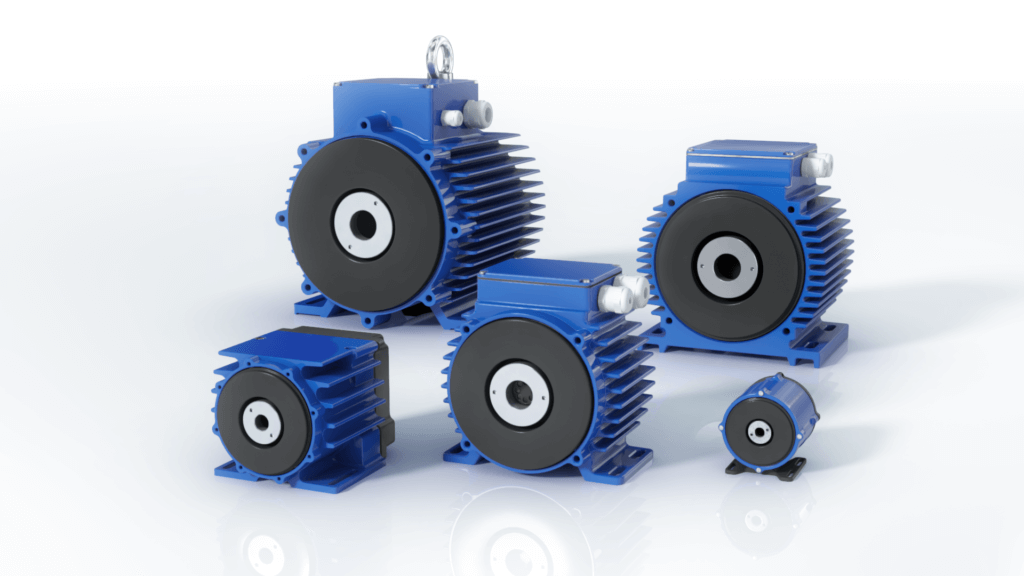
The Levitronix® bearingless motor technology is characterized by several outstanding features such as highest purity, wear-free operation, and high power density. Based on active magnetic levitation (MagLev), there is no contact between the rotating and stationary parts. Therefore no lubricant is required.
Bearingless motor technologies are applied in a variety of industries. In the medical industry, bearingless motors are used as heart assist pumps as the wide gap ensures no blood damage. In the semiconductor industry, bearingless motors are applied in different products such as pumps, mixers, fans, or wafer rotation systems since the lack of physical contact ensures the highest purity. Further potential applications include pumps, mixers, bioreactors, centrifuges, and viscometers for the biopharmaceutical industry.
Ideal for clean-room applications
As there is no contact between moving parts, there is no wear and therefore no particle generation. No lubrication is required, which makes the bearingless motor technology perfectly suited for clean-room and high-purity applications.
No leakages
The bearingless motor technology works with no seals, which can leak, break down, and fail. This makes it highly fail-safe and reliable.
Ideal for single-use applications
The rotor can be easily detached from the motor with minimal effort. This makes it the ideal solution for single-use applications.
Various cleaning methods
Due to the fluid gap around the levitating rotor, the technology is also suited for clean-in-place / sterilization-in-place applications.
Stable against harshest chemicals
The bearingless motor allows for operation in harsh ambient conditions such as in heat, cold, steam, vacuum, or exposure to aggressive chemicals.
Condition monitoring
The Levitronix® bearingless motor can continuously deliver a wide range of performance data, such as speed, torque, levitation force, rotor position, or temperature. These values can be monitored continuously, and trend warnings and operational limits can be set.
Much smaller due to absence of mechanical bearing
The rotational speed does not limit the lifetime of the bearingless motor. Therefore, the motor can run at higher rotational speeds than motors with mechanical bearings and can deliver the required performance on a much smaller footprint.
Self-contained design
Due to the magnetic levitation, the rotor is freely floating with no mechanical contact with the motor. This enables a hermetic enclosure of the process. This self-contained design has numerous benefits due to its mechanical, thermal, and chemical de-coupling.
A unipolar rotor has one pole-pair, i.e., features one north and one south pole. In the simplest case, the rotor is one cylindrically shaped magnet and has a more advanced structure. With a unipolar rotor, very high speeds are possible due to lesser high-frequency magnetization losses. This rotor is ideal for small to medium size motors in inner rotor construction, like centrifugal pumps.
A multipolar rotor, on the contrary, features a multitude of magnets. They are typically mounted on an iron ring to close the flux path at the backside of the magnets. This design facilitates high tilting stability and stable operation also at very low speeds. It is very beneficial for larger motors like wafer spin systems and motors in outer rotor construction, like mixers and fans.


Both outer rotor and inner rotor construction are possible and can be chosen depending on the demands of the specific application. An outer rotor setup is advantageous for fans, where the motor fits nicely into the rotor center, where blades would anyway not significantly contribute to pressure/flow generation. Also, for multi-use mixers, the outer rotor construction is preferred as it facilitates a zero-dead-volume tank design without a cup.
The inner rotor, on the contrary, can be produced more economically due to less magnet material and smaller and simpler rotor encapsulation, which makes it very suitable, especially for single-use mixers. Inner rotor designs are also the preferred choice for pumps, where unipolar rotors are running up to very high rotational speeds.


Depending on the space requirements of the application, the bearingless motor can be realized in flat construction or a so-called temple design. In the flat motor construction, the coils are all arranged in the x-y-plane, which results in a motor with larger outer dimensions, but low height. This setup is beneficial, for example, in clean-room wafer spin motors to make the wafer accessible from both sides. Also, outer rotor fans and mixers are typically built in flat construction design.
In the temple motor design, on the contrary, the coils are arranged vertically, and the flux paths through the motor are closed below the rotor. This setup leads to a motor of larger height but smaller diameter. It is especially suited for pumps and inner rotor mixers.


The bearingless motor technology is available in a wide range from small motors of a couple of Watts up to large motors of several Kilowatts. The different scaling laws of all motor parameters like torque, active and passive levitation forces, losses are considered for the scale-up. They must be set in context with the scale-up of the parameters of the specific application, like pressure, flow rate, mixing time, tip speed, acceleration time, etc.

